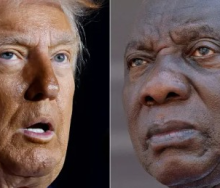The Port of Walvis Bay has recorded an increase of about 22% in vessel visits since the start of the Suez Crisis when air- and seaborne Houthi militia from Yemen attacked and hijacked an autoliner, the Galaxy Leader, near the Bab al-Mandab Strait between the Red Sea and the Gulf of Aden.
Due to the paralysis of Egypt’s crucial waterway, responsible for carrying as much as 15% of ocean freight travelling between Europe and Asia, the liner trade is en masse diverting vessels around the Cape, bringing extra business to Africa’s ports.
According to Elias Mwenyo, who heads up commercial services at Namport, “vessels diverted away from the Red Sea are definitely benefiting us”.
He said of the 22% increase in vessels calling at Namibia’s only deep-water port, as many as 15-22% of all ships are doing so for bunkering, an offshore capacity requirement in which South Africa is failing at the moment.
Apart from bunkering, Walvis Bay and nearby Swakopmund are also benefiting from tourism, travel and hospitality related to crew changes that are usually done when vessels refuel and restock supplies.
Was the port ready for the sudden increase in vessel visits and related services?
“I can’t say that we have had any capacity challenges,” Mwenyo said.
“On the bunker side, there are no issues with supply. What we have done is to call in more tugboats to assist with the bigger vessels.”
This includes plans for extended bunker barge services.
“The increase in vessels coming to our port is obviously good news for Namport. It places us on the map as a bunkering location, something we have been working at from a marketing perspective.”
He said the port’s capacity for extra vessel uptake showed that Walvis Bay had the means to absorb extra traffic.
Maersk, one of the first lines to withdraw vessels from the Suez when risk in the Red Sea spiked, has told CNBC that it has advised customers that the crisis could stretch well into the second half of the year.
“Unfortunately, we don’t see any change in the Red Sea happening any time soon,” Charles van der Steene, regional president for Maersk North America said.
“We’re advising them the longer transit routes could last through the second quarter (Q2) and potentially Q3.
“Customers will need to make sure they have the longer overall transit time built into their supply chain.”
Apart from Walvis Bay, Europe-Asia rotations rounding the Cape instead of passing through the Suez, are also preferring to make bunker stops at Singapore and Port Louis in Mauritius.
Algoa Bay in the Eastern Cape is still avoided because of offshore bunker capacity shortfalls.
A moratorium on new operators, which has since been lifted, prevented South Africa from extracting the same offshore bunkering profits that Namibia and Mauritius had because of Suez traffic diverted to the Cape.
Unathi Sonti, executive chairperson of the Maritime Business Council, warned that South Africa was losing out on millions in tax revenue and related benefits from crew changes because its only offshore stop didn’t have the necessary capacity to absorb an increase in vessel traffic.
The last time the increase in east-west vessel traffic around the Cape - as opposed to sailing through the much shorter Suez - was recorded, it was more than 53% and rising fast.













